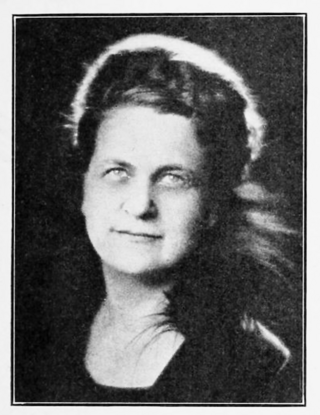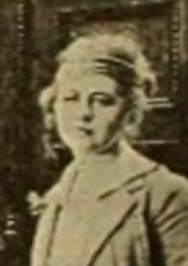
Essanay Studios, officially the Essanay Film Manufacturing Company, was an early American motion picture studio. The studio was founded in 1907 in Chicago by George Kirke Spoor and Gilbert M. Anderson, originally as the Peerless Film Manufacturing Company, then as Essanay on August 10, 1907. Essanay is probably best known today for its series of Charlie Chaplin comedies produced in 1915-1916. In late 1916, it merged distribution with other studios and stopped issuing films in the fall of 1918. According to film historian Steve Massa, Essanay is one of the important early studios, with comedies as a particular strength. Founders Spoor and Anderson were subsequently awarded special Academy Awards for pioneering contributions to film.

Dorothy Elizabeth Gish was an American stage and screen actress. Dorothy and her older sister Lillian Gish were major movie stars of the silent era. Dorothy also had great success on the stage, and was inducted into the American Theater Hall of Fame. Dorothy Gish was noted as a fine comedian, and many of her films were comedies.

Beverly Bayne was an American actress who appeared in silent films beginning in 1910 in Chicago, Illinois, where she worked for Essanay Studios.

Ruth Stonehouse was an actress and film director during the silent film era. Her stage career started at the age of eight as a dancer in Arizona shows.

Charlotte E. Burton was an American silent film actress.

Fay Tincher was an American comic actress in motion pictures of the silent film era.

Clara Whipple(néeClara or Clarissa or Clarise Brimmer Whipple; November 7, 1887 – November 6, 1932) was an American actress who flourished in theatre from 1913 to 1915 and in silent film from 1915 to 1919. She was also a silent film scenario writer.

Elisha Helm Calvert was an American film actor and director. He appeared in more than 170 films, as well as directing a further 60 titles.

Marguerite Clayton was an American actress of the silent era. She appeared in more than 170 films between 1909 and 1928, many of which were westerns with Broncho Billy Anderson and Harry Carey.

Arthur Rolette Berthelet was an American actor, stage and film director, dialogue director, and scriptwriter. With regard to screen productions, he is best remembered for directing the 1916 crime drama Sherlock Holmes starring William Gillette, an actor who since 1899 had distinguished himself on the Broadway stage and at other prominent theatrical venues with his numerous, "definitive" portrayals of Sir Arthur Conan Doyle's great fictional detective. In 1918, Berthelet also directed the controversial author and feminist Mary MacLane in Men Who Have Made Love to Me, a production notable for being among the first cinematic dramas to break the "fourth wall" and among the earliest American film projects to bring together on screen a woman's work as a published author, "scenarist", actor, and narrator through the use of intertitles.

Alfred Emory Johnson was an American actor, director, producer, and writer. As a teenager, he started acting in silent films. Early in his career, Carl Laemmle chose Emory to become a Universal Studio leading man. He also became part of one of the early Hollywood celebrity marriages when he wed Ella Hall.

Emilie Johnson was a Swedish-American author, scenarist, and movie producer. She was the mother of American actor, director, producer, and writer Emory Johnson. In 1912, Emory Johnson dropped out of college and embarked upon a career in the movie business, starting as an assistant camera operator at Essanay Studios.

Rosetta Dewart Brice, known professionally as Betty Brice, was an American actress in many silent films.
Reina Valdez was a silent film actress active in Hollywood in the 1910s.

Edna Hunter was an American stage and film actress of the silent film era, who appeared in more than a dozen films between 1915 and 1918.

Frances "Frankie" Mann was an American actress, who appeared in over forty silent films between 1913 and 1925.

Lillian GonzalesKohlhamer, also known as Lillian Gottlieb Kohlhamer, was an American suffragist and peace activist, based in Chicago. She was one of the American delegates to the International Congress of Women held in The Hague in 1915, and at the International Woman Suffrage Alliance conference in Geneva in 1920.

Mary Agnes Moore was an Irish-born American actress in silent films, part of a family of film actors.

Mattie Edwards (1866–1944) was an American actress who appeared in vaudeville theatre shows and early silent film productions from the 1880s through the 1930s. An African-American, she grew up in Fort Smith, Arkansas and spent her early life as a Deputy Marshal for the town. Later, she joined the P. G. Lowery minstrel group and then films produced by Essanay Studios. She moved between multiple film studios in the years following, including Williams and Walker Co. films in the 1900s, Lubin Motion Picture Company and Ebony Film Company films in the 1910s, before ending her major roles in Comstock-Elliot company and Oscar Micheaux films in the 1920s. She had several smaller film roles and ongoing theatre roles in the decades after, before dying in 1944 at the age of 78.


















